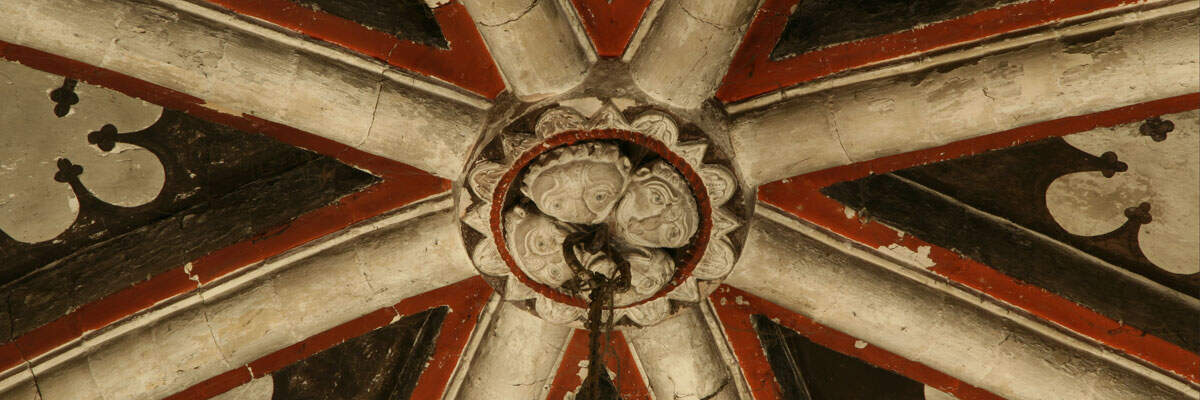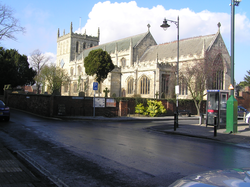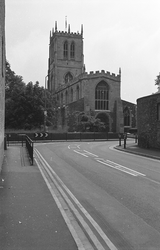
The Corpus of ROMANESQUE SCULPTURE in Britain & Ireland

St Lawrence (formerly)
Parish church
St Laurence is a large and complex church, which appears to be mostly from the 15thc. It has a chancel with N and S chapels and a vestry; N and S aisles to the nave; former chantries in the N and S transepts; remnants of a Consistory Court at the W end; and a tower above. The tower was added in the 13thc, with an additional bay at the W end of the 12thc nave.
Restoration 1868-9.
The only 12thc work previously recorded at this church are passages of walling in the transepts, and the W responds of the N and S arcades at the bay before the tower. The previously unrecorded corbels reused at the top of the tower are very worn. The tower was presumably updated in late medieval times with the battlements, so the date of reuse is not clear. There are about 50 12thc corbels, probably from the nave. The original corbels have the dimensions (a head-width) and form (cavetto) of 12thc corbels. The quoins of this course are not 12thc, but they are made of one extra large stone, at times with three carved heads - one on each face of the tower and one on the angle. These carvings have not survived in a good condition either.
Parish church
‘A surprisingly large, dominating cruciform church with a crossing tower so big and proud that it might stand in Somerset’ - Pevsner 1967, 254.
The church is cruciform with a central tower, an aisled nave and chapels flanking the chancel.
The church has a round-headed, late twelfth-century western doorway, a west facade with the remains of walling, and windows on both north and south aisles. There is a doorway on the south aisle, and walling of field-picked glacial rubble mixed with blocks of limestone, with facings and a doorway of Magnesian limestone. There are records of a fire in 1760s and a restoration in 1870s.
On the visit in 2002, windows had been broken and we took pictures of the wooden chests near the windows. Two of them 'could easily be Romanesque' according to a letter from Prof. E. B. Hohler (Norway). The chest shaped like a coffin is of bog-oak, which is found in Thorne Moors.

